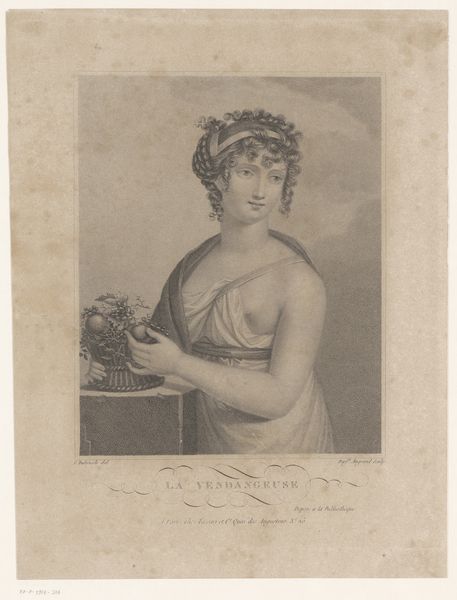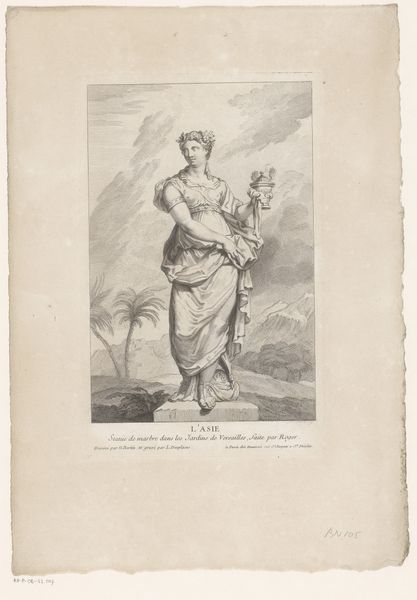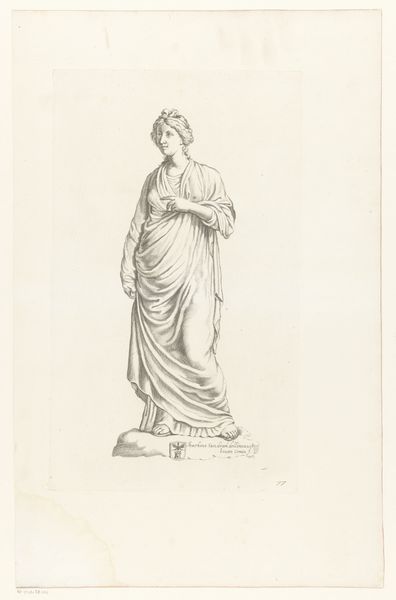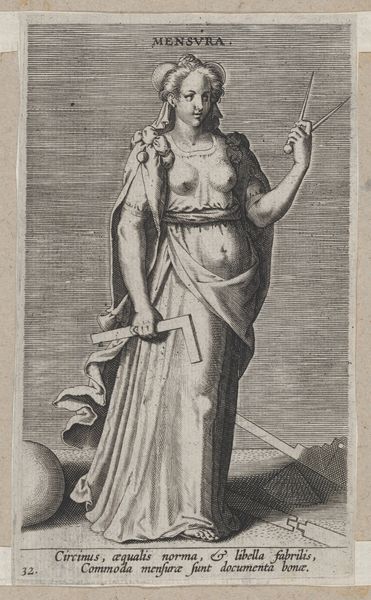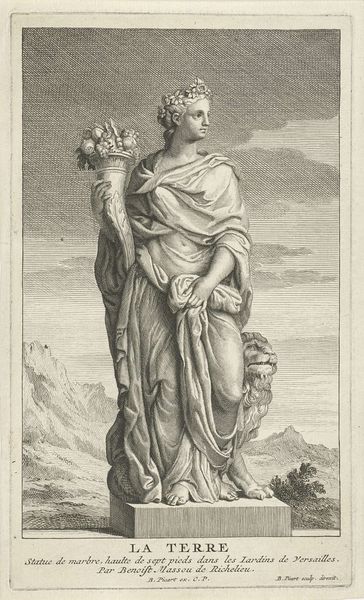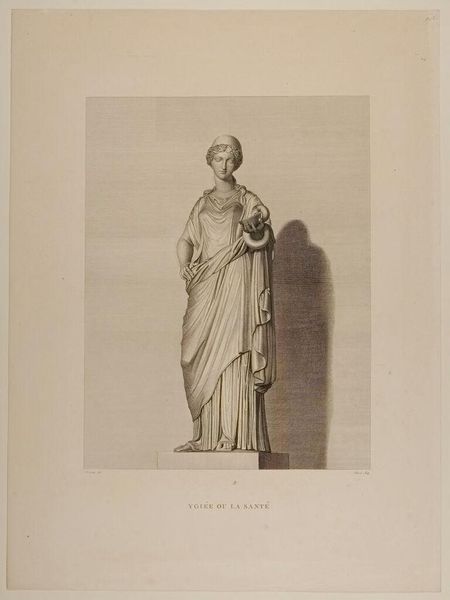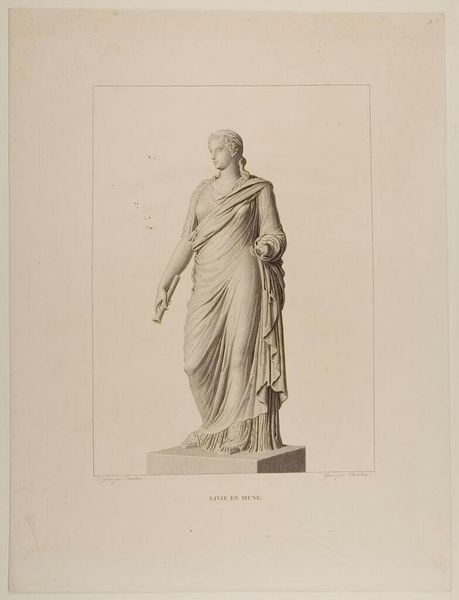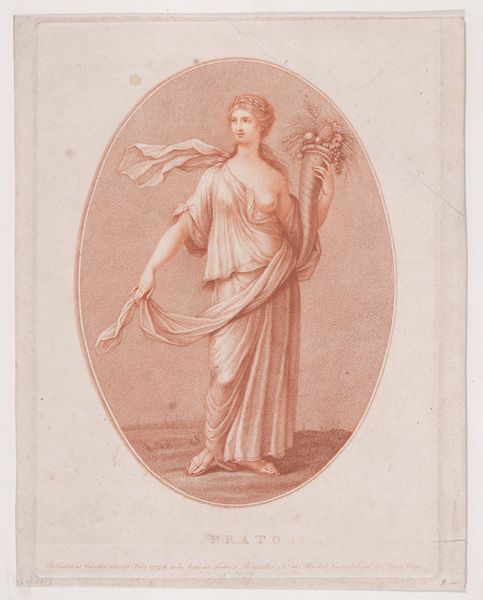
print, engraving
#
portrait
#
baroque
# print
#
old engraving style
#
figuration
#
classicism
#
history-painting
#
engraving
Dimensions: height 178 mm, width 107 mm
Copyright: Rijks Museum: Open Domain
Editor: So, here we have "Lente," an engraving from 1709 by Bernard Picart, currently at the Rijksmuseum. It features a draped figure holding a basket of flowers. The rendering of the fabrics looks remarkable; however, it has an air of somewhat restrained idealism about it, don’t you think? What strikes you about it? Curator: The engraving exemplifies a carefully structured composition typical of its period. Note how the figure's contrapposto stance creates a dynamic balance, the weight shifted onto one leg, thus giving the hips and shoulders a slight opposition. Further, the arrangement of light and shadow, achieved through meticulous cross-hatching, delineates form and adds depth. The sculptor of the statue rendered anatomical detail, emphasizing classical ideals of beauty. How might you consider the use of line in this work? Editor: I see how the line work is very precise, creating these distinct planes, almost like a sculptural study. There’s this push and pull, between the naturalistic rendering of the body and the obviously constructed nature of the image itself, right? The clouds, for example, almost feel formulaic. Curator: Indeed. The stylized clouds and the figure's idealized form reflect a deliberate artistic choice. These elements point toward a prevailing aesthetic that privileges order and refinement. This isn't about replicating reality; it's about constructing an idealized version of it, employing visual language readily legible by its intended audience. The formal choices here serve to elevate the subject. Editor: That makes sense. So, it’s less about trying to "fool the eye," and more about presenting an idea through a very controlled vocabulary. Curator: Precisely. This engagement with artistic vocabulary grants insight into the artist's approach and broader cultural values. Editor: Thank you for your insights! I see how understanding the formal choices reveals a deeper appreciation of the artist's intent and the period's aesthetics. Curator: It is my pleasure. It’s enriching to reconsider artistic purpose through this rigorous analytical frame.
Comments
No comments
Be the first to comment and join the conversation on the ultimate creative platform.

